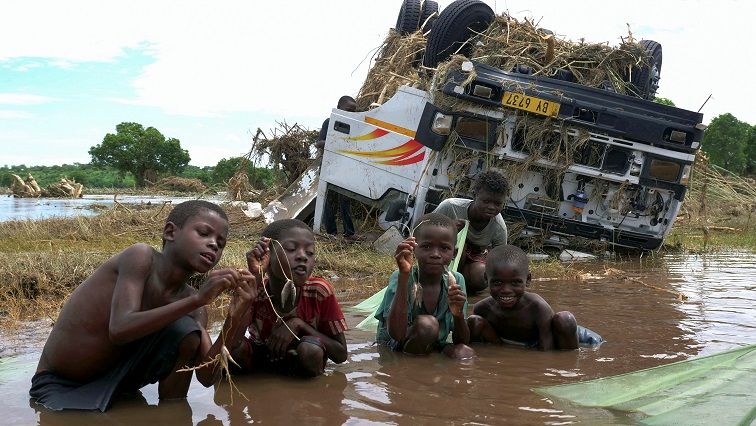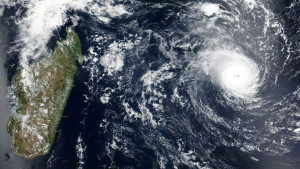Residents in Madagascar’s capital Antananarivo placed bricks and rocks on their roofs on Friday as tropical cyclone Batsirai barreled towards the island.
“We are not ready, we used what we could, anything to reinforce the house,” said Nivo, a resident living in a low-lying area of Antananarivo.
Batsirai could yet intensify from a category 3 to category 4 equivalent before making landfall in eastern Madagascar on Saturday, according to a spokesperson from the World Meteorological Organisation.
The storm is projected to drive up to 150 000 people from their homes in addition to some 130 000 people displaced by the last cyclone.
MEDIA RELEASE: Update on Intense Tropical Cyclone Batsirai pic.twitter.com/PoY7OOsUXv
— SA Weather Service (@SAWeatherServic) February 4, 2022
The region has been repeatedly struck by severe storms and cyclones in recent years, destroying homes, infrastructure and crops and displacing large numbers of people.
Experts say storms are becoming stronger and more frequent as waters warm due to climate change, with rising sea levels also making low-lying coastal areas vulnerable.
Early this year it was reported that more than 20 000 people in Mozambique have been affected by the storm, with more than 3 000 homes partially destroyed and over 600 totally destroyed along with several health centres and dozens of classrooms, the institute said, adding that drones and boats had been deployed in relief efforts.
In neighbouring Malawi, where the storm led to major power cuts as flooding damaged electricity installations, the district commissioner for Chikwawa confirmed three deaths, after the disaster department reported a death in Mulanje.
Mozambique and other southern African countries have been repeatedly struck by severe storms and cyclones in recent years that have destroyed infrastructure and displaced a large number of people.
Experts say the storms have become stronger as waters have warmed due to climate change, while rising sea levels have made low-lying coastal areas vulnerable.






